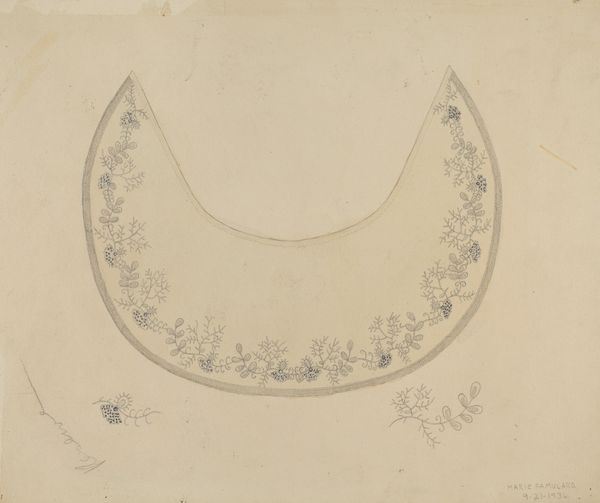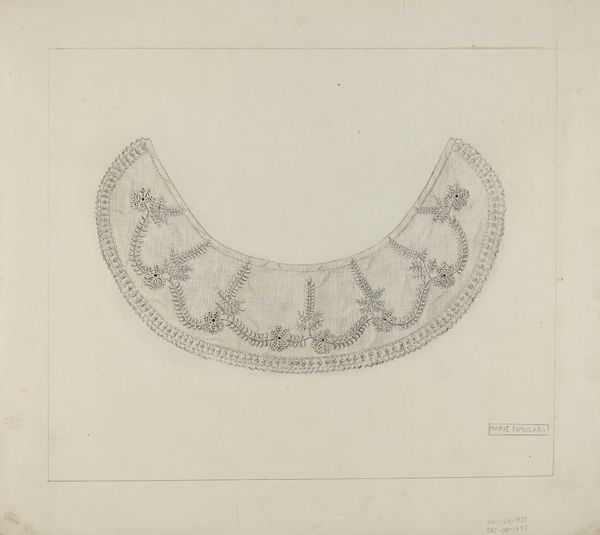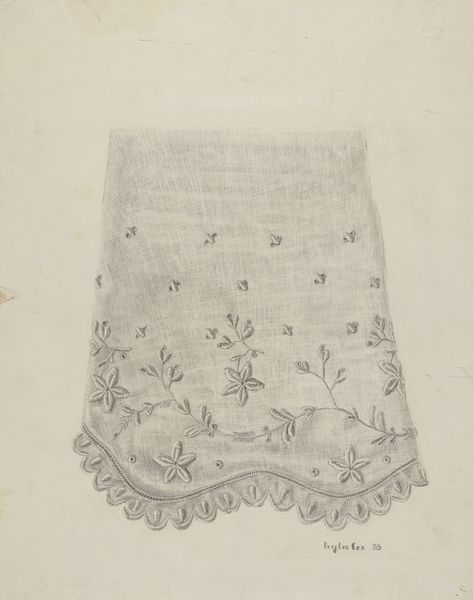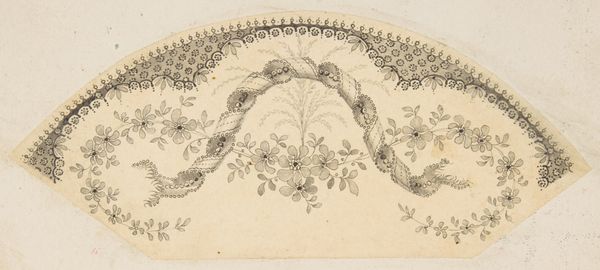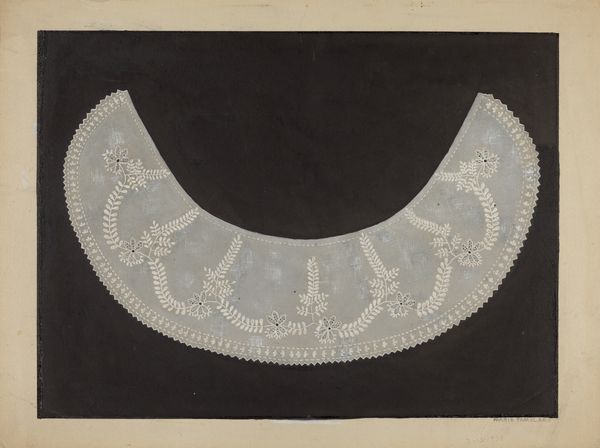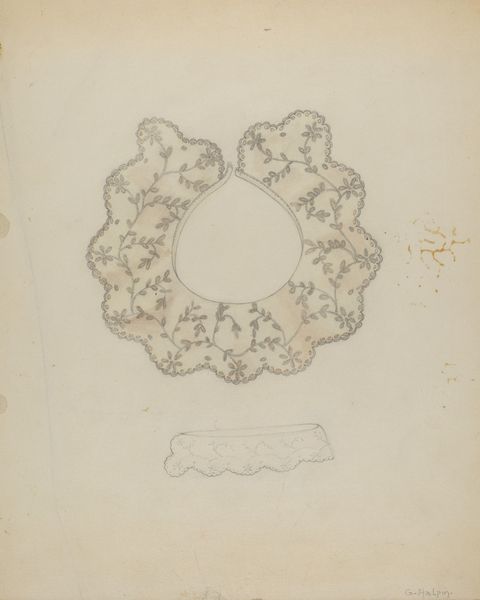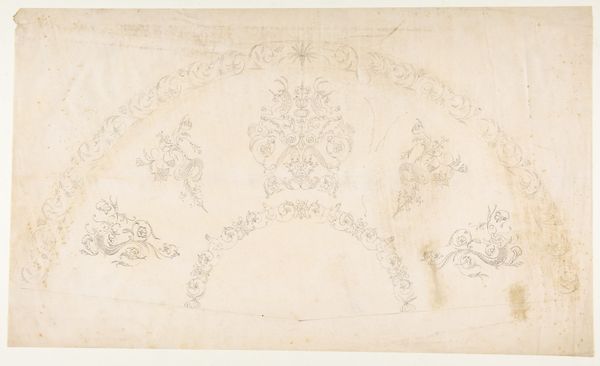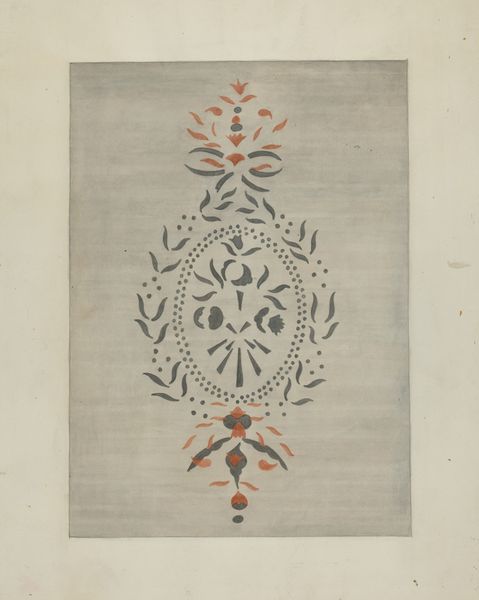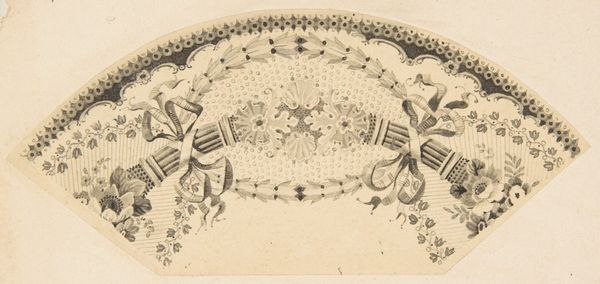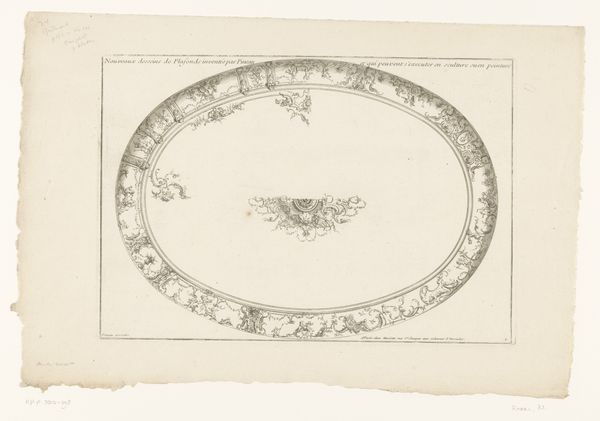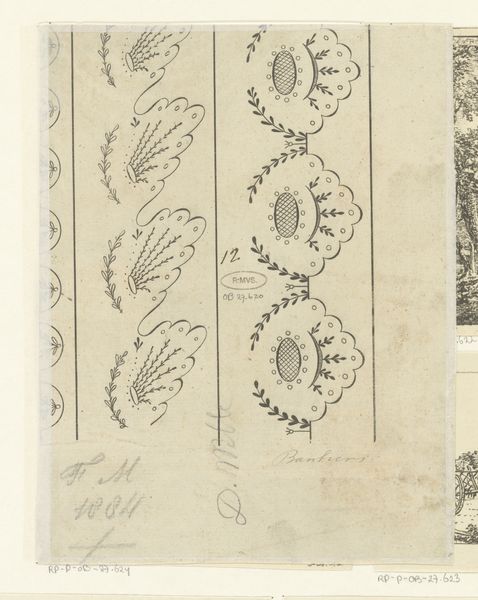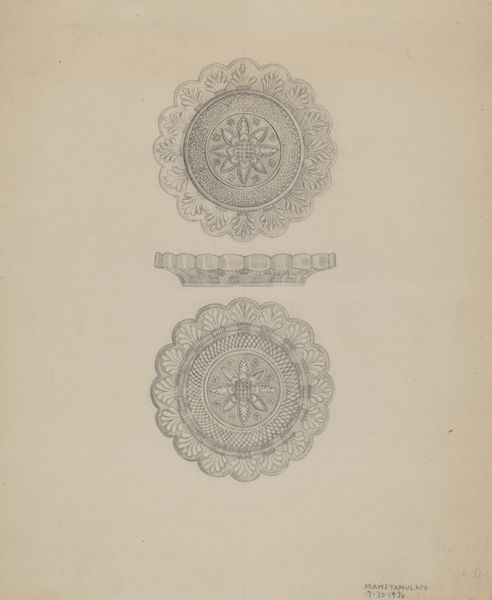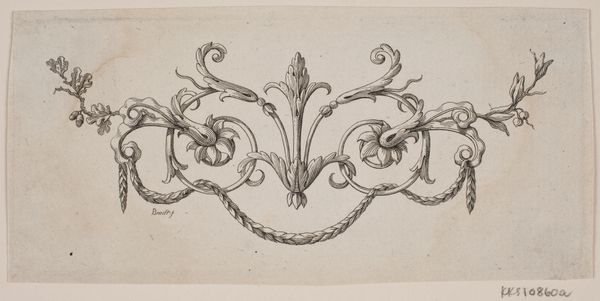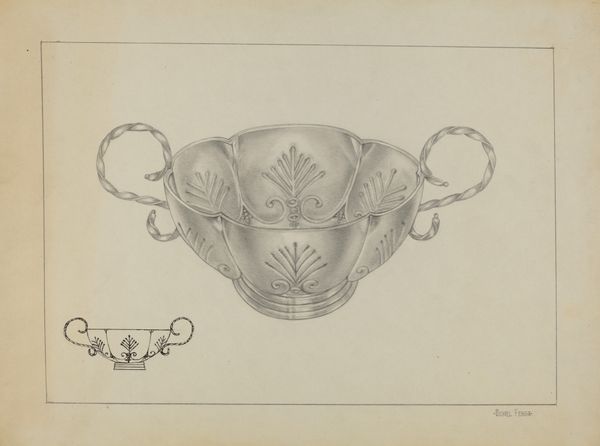
drawing, paper, pencil
#
drawing
#
paper
#
form
#
pencil
#
line
#
decorative-art
#
watercolor
Dimensions: overall: 22.9 x 28 cm (9 x 11 in.) Original IAD Object: 9 1/2" long; 2 1/2" wide
Copyright: National Gallery of Art: CC0 1.0
Curator: The pencil and paper drawing titled "Collar," created around 1938 by Marie Famularo, offers an intriguing simplicity. The lines sketch out an ornate, scalloped collar, seemingly detached from any garment. Editor: It has a certain haunting quality, doesn't it? Almost like an echo of femininity, a delicate craft frozen in time, all done with very light, nearly ephemeral strokes. Curator: Indeed. The collar, of course, historically represents notions of modesty and decorum. Famularo made this drawing, we need to remember, at a very specific point of the late Depression Era. Considering prevailing attitudes on women's work, what narrative is spun by focusing on something decorative, associated with domesticity? Editor: And there's the rub. The delicacy contrasts sharply with the socio-economic hardship. Is she referencing traditional roles, perhaps critiquing them, or searching for a form of escape in artistic creation? Could this simply be celebrating detail amidst bleak surroundings? Curator: The piece really invites those dual readings, I agree. The fact that we have the lone sprigs disconnected from the whole points to those considerations. The separation highlights this push and pull between the ideal and the fractured reality. One also thinks of lacemaking's traditional relationship with female agency as an activity that creates value. Editor: Yes, it seems the collar's very absence of context – divorced as it is from any body or dress form - pushes viewers toward thinking about labor. Was such decorative labor valued? Who typically bore the burden? Was this piece a yearning, or an observation, about material status? It resonates with me on multiple levels. Curator: It really underlines how everyday objects, elevated to art, speak volumes. I’m drawn to its capacity to capture social nuances through what appears to be just an impressionistic, light rendering. Editor: Exactly, a deceptively gentle form hiding profound context. It's like an understated act of quiet rebellion, and now seeing it through your historical lens makes the form all the richer.
Comments
No comments
Be the first to comment and join the conversation on the ultimate creative platform.
